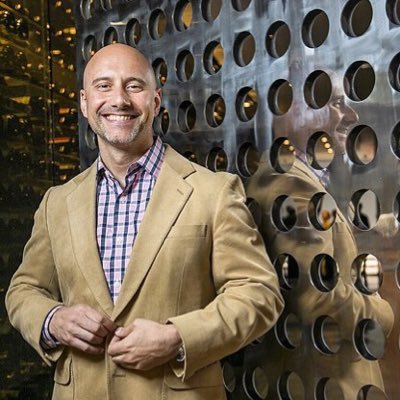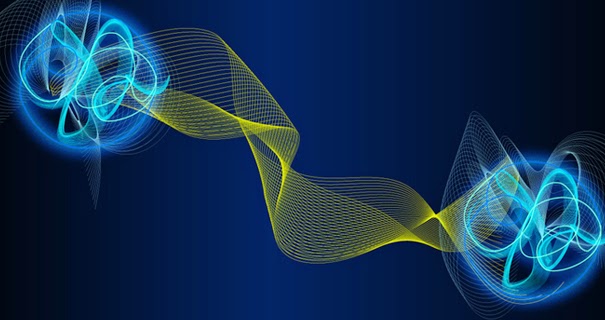n
Sabato’s exam stands out as one of the best I’ve ever seen. In the last 20 years I’ve rarely observed anything like it. What it has in common with all the other best tasting exams I’ve witnessed, is that once the candidate started tasting they went far, far away into their own world and stayed there until time was up. It’s as if everything but the glasses in front of them doesn’t exist.
There’s an enormous benefit to being able to establish a deep, focused state for exam purposes–or practically anything else for that matter. For the student, it creates an optimal state in which a highly complex task like a tasting exam can be done proficiently without outside distraction, while at the same time avoiding nerves and anything remotely connected to the flight/fight/freeze mechanism. This kind of intensely focused state is often called the “zone” by athletes and other performers, and the best of them become very proficient at getting into and staying in their zone when needed.
I asked Sabato how he prepared for the exam and he told me that he trained for it like an athletic event by using what he called a “360 degree approach.” He believes—and rightly so—that the tasting exam has more variables than the other parts of the exam in terms of how well one feels on a given day, if it’s a good smelling/tasting day for the individual, and even who is on the other side of the table as far as the examiners are concerned. He told me that previous to that day in Aspen, he was always nervous about who the examiners were; that when his mind wandered it was, as he called it, “my worst enemy.”
To combat nerves, he practiced tasting in the same manner; blocking out everything but the six glasses, regardless of who he was tasting with. He also exercised regularly focusing on being able to elevate and lower his heart rate quickly, simulating the nerves of the exam. He further used meditation to practice calming his mind to be able get into a focused state quickly. Finally, he used music to get to prepare for the exam by creating a special playlist that he used regularly to again put him in a great state before a practice tasting or to mentally rehearse the actual exam day. It goes without saying that he listened to the same playlist on the exam day while walking to the hotel. By the time he arrived he was calm, intensely focused, and ready to go.
Sabato is not alone in his approach. Without exception, everyone I’ve worked with on my tasting project over the last several years is capable of quickly getting into a tasting “zone” quickly when focusing on a glass of wine. I’ve noticed that when experienced tasters go into their so-called “zone,” they usually get there by using a consistent eye position and a specific quality of focus with their eyes. I’ve written about the starting eye position many times previously, practically everyone I’ve worked with looks down at about a 45 degree angle and either straight ahead or slightly to the left. A few look down and slightly to the right while an even smaller number look out at the horizon level either straight ahead or to the left. I do want to note—and this is important—that the specific location of anyone’s starting eye position is not hugely important. What is important is that the individual has somehow found it and uses it consistently either consciously or unconsciously, the latter of which is generally the case in most experienced tasters.
Personally I’m able to drop into a zone pretty quickly when tasting by looking down at approximately 45°, slightly to the left, and asking myself some form of the question, “What’s there?” What’s also important is the fact that my eyes are slightly unfocused and I’m staring in space about 18-24 inches away–again down and slightly to the left.
I’ve thought about Sabato’s exam a great deal in the months following and now believe it’s critical for any student to be able to quickly get into a state of deep, focused concentration for a tasting exam–a tasting trance, if you will. The challenge becomes how to easily find one’s zone and use it consistently. Here’s an exercise to help discover your own personal zone and fine tune it.
Overlapping
Throughout the course of a day, we constantly change our focus and state of awareness, from holding a conversation to driving to watching TV to taking part in a physical activity such as jogging. Further, as we go through our day we process information from the outside world with our preferred sensory system or modality, which is visual for practically everyone. In short, most of us represent our experience internally with pictures and movies. Given that, try an exercise called “overlapping” to get a sense of what it feels like to be in a deep state of focused concentration. Overlapping involves using a past memory—again highly visual–and paying close attention to all the other sensory information associated with the memory which then quickly results in a deeply focused—and one might even say altered—state. It’s simple to do using the following directions.
1. Go inside and think of a memory of a physical activity; riding a bike, jogging, or swimming are good examples. Bring up the memory as vividly as you can; if it’s jogging, see the path in front of you in detail as you move quickly and easily along.
2. Now add another sensory modality. Feel your arms moving back and forth and your legs striding with each step.
3. When you’ve added a second sensory modality, think of a third; in this case you might hear the sound of your feet hitting the ground with each stride.
4. Now go back and add detail to each modality; make the scene in front of you as clear and bright as possible, feel the breeze on your face as you’re running as well as the ambient temperature of the air around you; hear the sounds of traffic around you or birds chirping if the scene is a path in the country.
5. Stop and notice the quality and depth of your state of awareness at this point. Odds are it’s a pretty deep state of concentration—exactly the kind needed for a tasting exam or other activity requiring exacting detail. Also notice the position and focus of your eyes, literally where you’re looking and the quality of the focus of your gaze.
Overlapping with Wine
Now try overlapping using a memory of a wine you’ve tasted. Choose a wine that’s easy to remember—a botrytis dessert wine like Sauternes comes to mind. Using the model above, go through every aspect of the wine in sequence.
1. First, see the color of the wine as vividly you can; a botrytis wine would be a deep yellow gold in color.
2. Now add some primary aromatics to the memory as in ripe peach and apricot fruit.
3. Next feel the luscious texture of the wine on your palate—pay close attention to the balance of sweetness and tart acidity and how it tastes and feels on your palate.
4. Add more data and deepen your state of awareness, your zone. Go back to the visual and add the secondary colors which could be glints of green and deeper gold. Also see how the wine moves in the glass with richness and high viscosity from the residual sugar. Next smell more components in the wine focusing on non-fruit, earth and oak; bring up the ginger and honey from botrytis, the mushroom/earth elements, and all the spice notes from oak-aging. With the palate, feel the warmth from the alcohol on your palate and calibrate the precise temperature of the wine.
Now play with it. Make everything about the wine younger and then much older and more vinous. Stop once again and notice the depth and quality of your state of awareness, your zone. Also note where you’re looking and as well as the soft quality of your eyes. If you’re talking to yourself, note the quality of your voice; the tonality and volume are especially important.
With the Glass
The final step is to practice getting into your zone using the act of picking up a wine glass as the trigger. It’s as simple as using your eye position and focus just as you pick up the glass and bring it to your nose. For me the sequence is again literally picking up a glass with my right hand, eyes going down and to the right about 15-18 inches away (the length of my arm), and saying, “What’s there?”
Practice getting into your zone quickly—and on command. Also practice getting out of it quickly. You may need to. Use it when you taste—always.
nn

